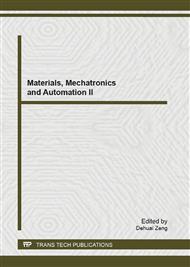p.62
p.68
p.74
p.78
p.82
p.86
p.92
p.99
p.105
Analysis and Prediction of Bore Pressure Based on BP ANN
Abstract:
The rule of Fire bore pressure and the maximum bore pressure point are very important problems in interior ballistics. This paper analyzed the characteristics of the bore pressure by an improved BP neural network, furthermore predicted the maximum bore pressure by the net-work well trained above. First, an improved three-layer BP neural network were established ,and trained by low frequency (20kHz) pressure data, and then several high frequency (50kHz,100kHz,200kHz) pressure data were fitted by the same network, furthermore the maximum bore pressure and the time of the maximum bore pressure were predicted by the network. Compared with the actual measured data, it was shown that this method also applied to the high frequency pressure data, and had a high fitting accuracy and prediction accurate. Above all, it proved the method is feasible and generic, can be applied to related dynamics problems, and has a value for application.
Info:
Periodical:
Pages:
82-85
Citation:
Online since:
August 2013
Authors:
Keywords:
Price:
Сopyright:
© 2013 Trans Tech Publications Ltd. All Rights Reserved
Share:
Citation:


